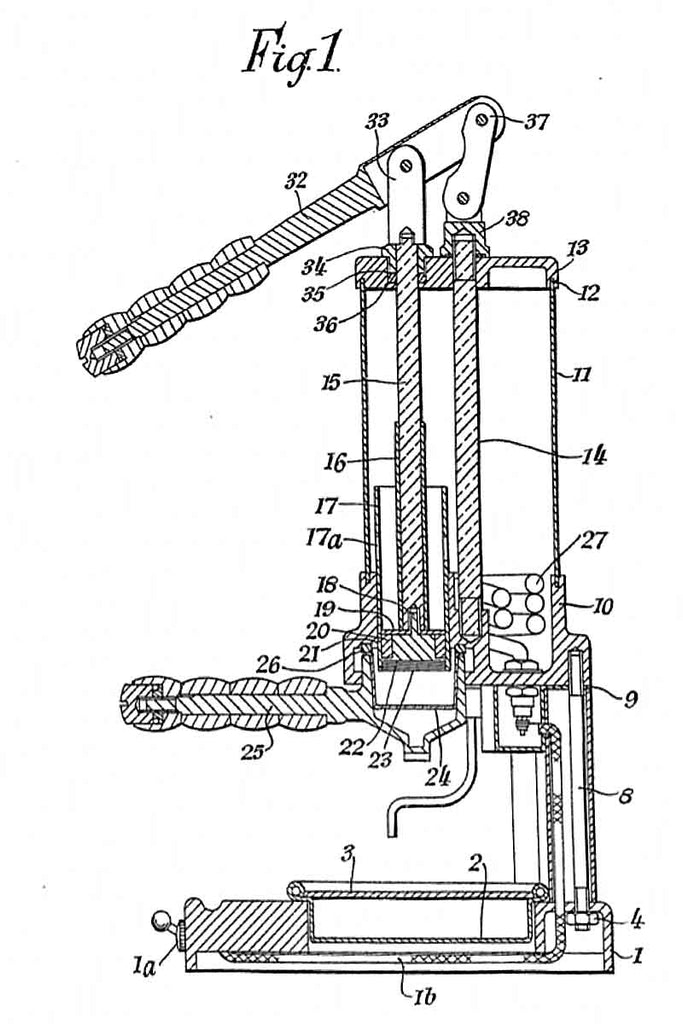Gaggia Gilda
by Francesco Ceccarelli
We are in the early 1950s, the Second World War has only been over for a few years and we are rapidly moving towards a period of great optimism, economic development and widespread prosperity. The first household appliances that brought a touch of modernity to the homes of Italians started appearing. Coffee is a daily ritual that cannot be renounced and alongside the classic flame coffee makers, such as the Moka or the Napoletana, the first lever machines for domestic use were produced and marketed. The success is immediate and within a few years most of the lever machines that will be produced continuously over the next two decades come to light.
The undisputed protagonist of those years is a barista, Achille Gaggia, born in 1895 and who in the bar he manages dedicates all his energy to improving the quality of the coffee produced. He is responsible for the intuition of eliminating steam from the coffee production process, through the use of a spring that, combined with a lever piston, guarantees sufficient pressure to push water through the coffee for a short enough time to allow the extraction of a restricted coffee. With this invention Achille Gaggia determines the beginning of the worldwide success of espresso coffee and its machines. Alongside the production of coffee machines, Gaggia immediately launched on the market a model for domestic use: the Gilda.
The Italian patent is dated 26 April 1952 and is the first known patent of a lever machine for domestic use.
 Original Gaggia Gilda patent
Original Gaggia Gilda patent
Advertisements in the most popular newspapers and correspondence sales through the Caudano Catalogue, made it easier for Italians to spread it in their homes, despite the fact that its cost of 35’000 lire, equal to the average wage of a worker, was not within everyone's reach.
The machine is made of aluminium with some chrome-plated brass components and embellished on the outside by engravings bearing the inscription Gaggia Gilda. The drip tray is also perforated in such a way as to represent the letter G of Gaggia and Gilda. The boiler is of the closed type and a valve guarantees its safety from overpressure. Additionally, a thermometer integrated in the filling cap allows to verify that the operating temperature has been reached.
 Thermometer, drip tray and engravings
Thermometer, drip tray and engravings
It is equipped with only one heating element, so when the boiling temperature is reached, the machine must be disconnected from the power socket. It was available with voltages of 125, 160, 220 or 260, depending on the electrical network on which it was to be used, as in Italy in the 1950s there were several energy suppliers, each with their own voltage, and only in 1962 there was the unification of the national 220-volt electrical system and the establishment of the Ente Nazionale per l'Energia Elettrica (ENEL).
The height was about 45 cm and the weight around 5 kg. There was also a version with a height of 57 cm, available to those who needed a tank with a larger capacity.
The machine was equipped with instructions for its use and could be easily disassembled without the need for specific tools.
 Gaggia Gilda completely disassembled
Gaggia Gilda completely disassembled
The production period was limited to only two to three years, probably due to some design limitations that could not be easily overcome, such as single resistance and the simultaneous competition from other lever machines that were coming out year after year. Despite the short period of commercialisation, it is still easy to find. Because of its charm, history and design it cannot be missing from a collection, whether small or large, in which it will always occupy the place of honour.

Gilda '54 "a orecchie di coniglio"
Two years later, in 1954, a new model called Gilda '54 was added to the Gilda, which, due to its peculiarity of being equipped with two levers that can be folded by means of a joint, is called "a orecchie di coniglio" which in Italian means “with rabbit ears”. Cheaper than its older sister, it cost "only" 23'000 lire.
The Gaggia workshops also produced a model similar to the Gilda but with an open boiler called the Iris.

Gaggia Iris
With these three models Gaggia ended its interest in the production of lever machines for domestic use, but the Gilda '54 model still survived for a few years more in Spain, where an imitation called Gilda '55 was produced.
Simone, editor of The Lever, embarked on a new journey starting from July 2025.
He is volunteering in Nicaragua to learn about coffee farming and is documenting his journey through physical letters sent directly to your doorstep.
Curious to hear his experiences?